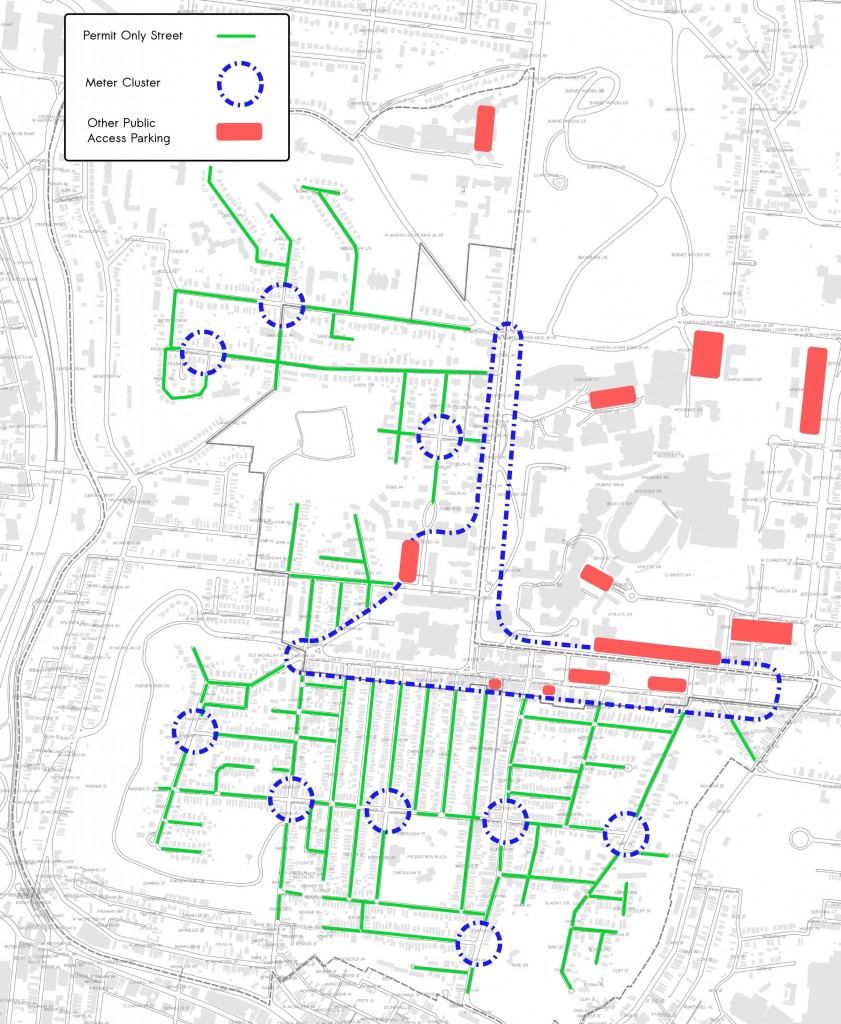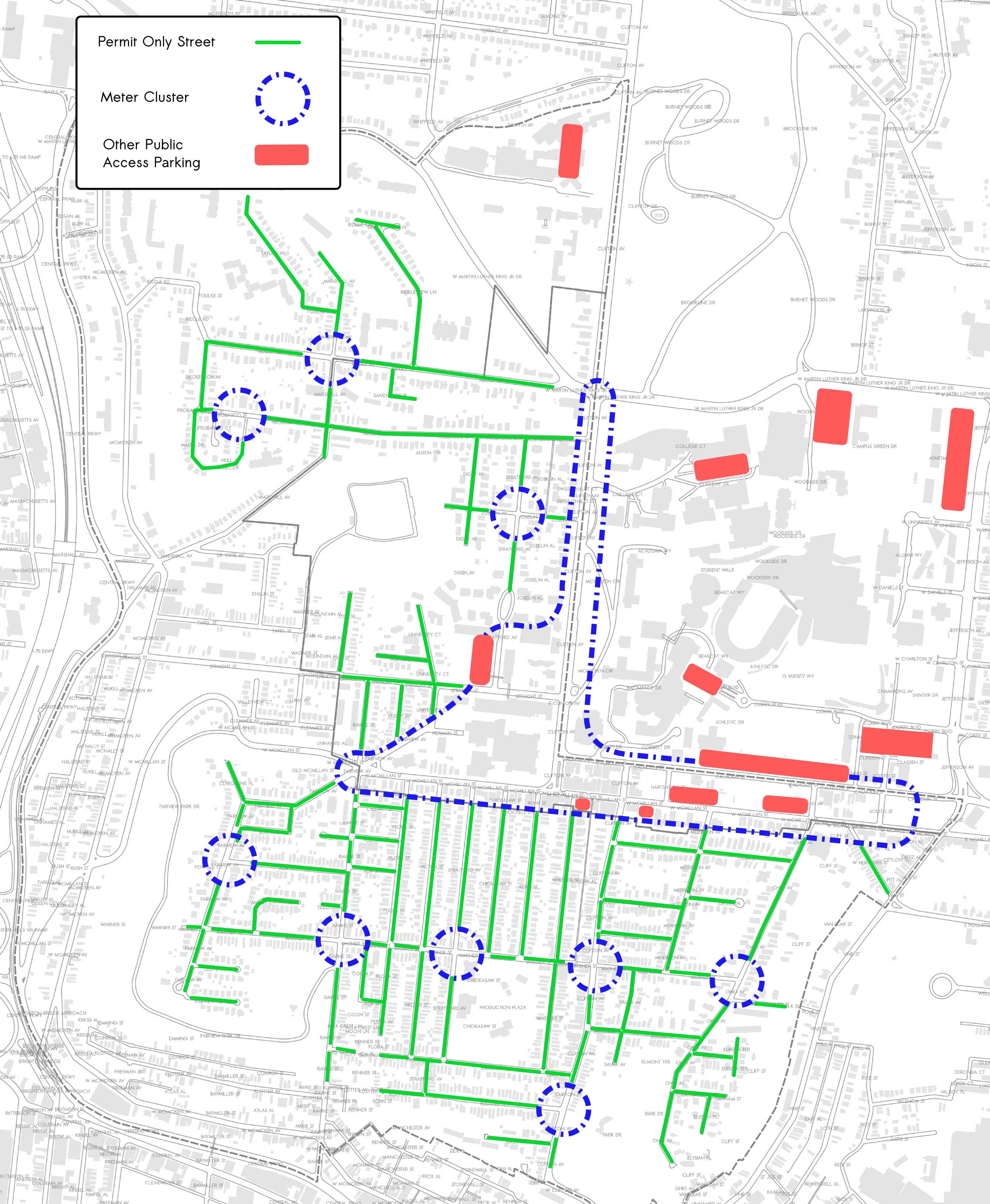The streets of Clifton Heights, University Heights, and Fairview (CUF) are becoming more congested each year. As the University of Cincinnati (UC) enrollment increases, it has become a struggle to provide enough housing units and places to store automobiles.
This growing population shines light on a problem CUF has struggled with for more than 30 years. It is hard not to notice that Cincinnati’s urban core is on the up-and-up, and the work that organizations like the Cincinnati Center City Development Corporation (3CDC) and OTR A.D.O.P.T. are doing in Over-the-Rhine is making the area more attractive to young professionals, artists, students, and even some older suburbanite emigres. And this is a trend that seems poised to continue as gasoline prices continue to rise.

Proposed parking reform plan for uptown’s Clifton Heights, University Heights and Fairview neighborhoods. Image Provided.
The increased interest in downtown will soon spillover into CUF which itself has many benefits – ample green space (Bellevue Hill Park, Fairview Park, and tree-lined streets), a variety of restaurants and nightlife, unique cafes, beautiful houses and of course its proximity to UC, Findlay Market, Over-the-Rhine and the Central Business District. An influx in residents means more people, more cars and tougher competition for car storage in a neighborhood proudly built in an age before automobile parking was mandated by law.
It was with all of this in mind that the CUF Neighborhood Association (CUFNA) trustees formed a committee in the summer of 2010 to develop solutions to the parking problem. The committee, made up of longtime residents, landlords, students, new residents, and business owners, has worked for the past year-and-a-half to develop a plan to serve the parking needs of both residents and visitors alike.
The committee’s proposal is similar to San Francisco’s metered parking program, and calls for a market-based approach to allocating on-street spaces. It is envisioned that this will provide residents with greater certainty in parking while allowing better access for shoppers and visitors. The plan, which would ensure the constant availability of parking spaces, is projected to pay for itself and provide a substantial new source of revenue for either the City or a specific neighborhood improvement district.
The parking proposal calls for the introduction of priced monthly permits or smart-metered shorter term parking for the roughly 3,000 on-street spaces in Clifton Heights, University Heights and Fairview. The city’s Department of Transportation & Engineering (DOTE) would then be responsible for setting permit and meter prices each month to target an 85-90% occupancy rate.
The prices, advocates say, would be skewed in favor of neighborhood residents and would ensure that some spaces are always available when they are needed. Currently, residents and visitors alike can spend up to an hour circling not only on weeknights, but throughout the day as well.
Preliminary numbers indicate the revenue from permit sales alone could pay for around-the-clock enforcement while still generating a surplus of between $50,000 and $200,000 annually. San Francisco and Washington, D.C. have proven the popularity of such programs. With increasingly congested streets these cities began to set market forces on the efficient allocation of on-street vehicular parking.
Advocates of the idea say that they are still working to get the city’s support, but hope that progress can be made on the reforms sometime in 2012.
